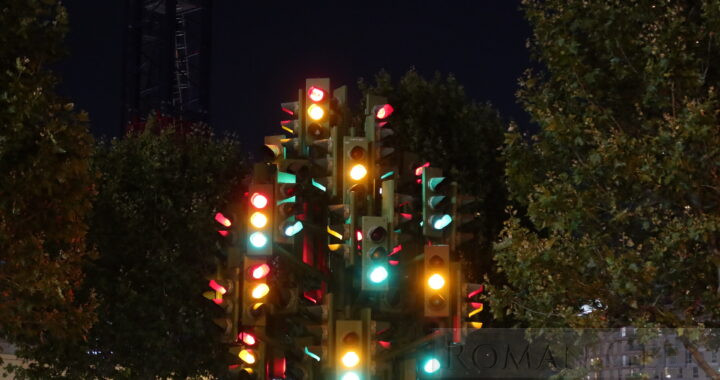- Julius Caesar introduced a Road Traffic Act called the ‘Lex Iulia Municipalis’ in 45 BCE.
- The law banned commercial traffic during daylight hours in Rome. Later Emperors would insist on Pedestrians only and the banning of horses and carriages.
Lex Julia Municipalis
- The Law was passed by Julius Caesar with the aim of reducing congestion in Rome by banning cart traffic during the daylight hours.
- Fragments of a bronze tablet containing the Lex Julia Municipalis were found in Heraclea. They are now housed in the National Archeological Museum Naples.
Which side of the Road did the Romans drive on?
- Romans drove on the Left Hand Side.
- Originally, the Armies of Ancient Greece, Ancient Egypt and Ancient Rome all marched on the Left Hand side, keeping their right arms free to draw their swords and adopt a defensive stance.
- Driving on the left followed naturally from this.
Did Ancient Rome influence modern driving practice?
- The UK, Ireland, Cyprus, Malta, India, Pakistan, Australia and New Zealand continue to drive on the left.
- Driving on the left continued in Europe until very recently. Driving on the right first started in France after the French Revolution (1789).
- After Napoleon’s European conquests, driving on the right was gradually adopted by many European countries. Scandinavia, Russia, China, North and South America also all drive on the right.
Goods Traffic could only move at night
- When Julius Caesar passed the Lex Julia Municipalis in 45 BCE, it stated that no private vehicles, such as carts, could move during the first ten hours of the Roman Day in Ancient Rome.
- It was forbidden to move carts by day between sunrise and two hours before sunset, within the city walls and up to one mile outside of them, to avoid congestion.
- So commercial traffic could only travel for the last two hours of daylight, and then had to move in the night.
Restrictions on Carriages and Horses in Rome
- Early on, carriages were restricted to being used in Rome only by the higher classes, to avoid congestion.
- Claudius (41-54 BCE) passed a law that travel in Roman towns must be on foot or in a Litter.
- Hadrian (117-138 CE) passed a law that inside Roman towns, horses could not be ridden.
The Lectica
- The Lectica was a Litter used in Ancient Rome.
- The wealthy ancient Roman men or women were transported about the streets of Rome by four slaves or servants supporting a portable couch, sometimes covered by an awning.
Roman Street Lighting
- The streets of Rome were lit at night. Unfortunately, no record survives as to the method. The possibilities are either multiple oil lamps set up on poles, candles inside glass containers, or flaming brands positioned by the roadside.
- In Ancient Rome, Torches were made from a wooden stave with one end wrapped in a flammable material. This was usually sulphur mixed with lime, which could not be extinguished by water.
- All Roman villas had an oil lamp hanging outside the entrance which was lit at night.
Photo and map: The Traffic Light Tree, Blackwall, London

